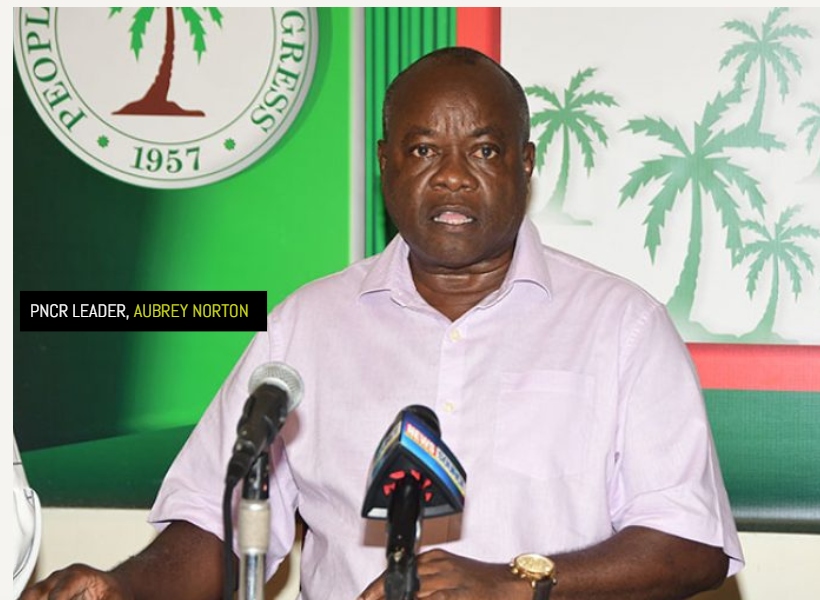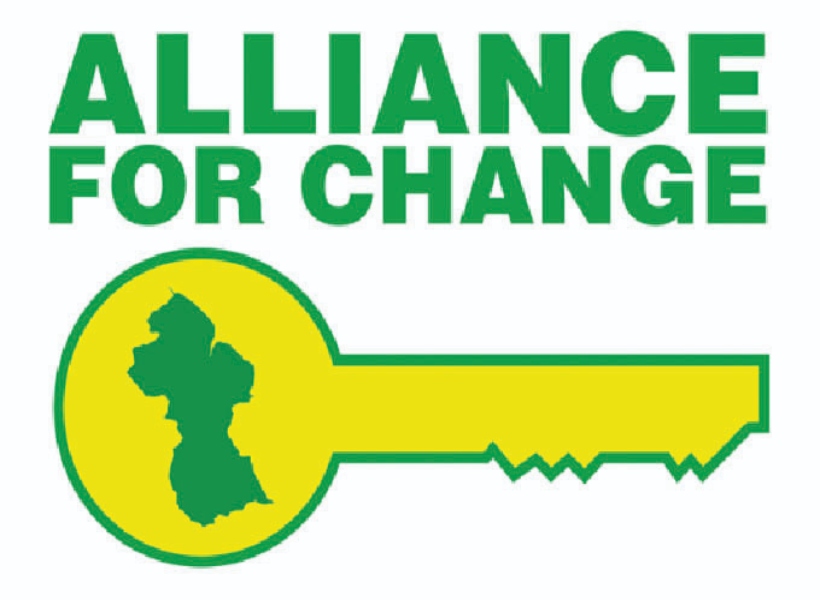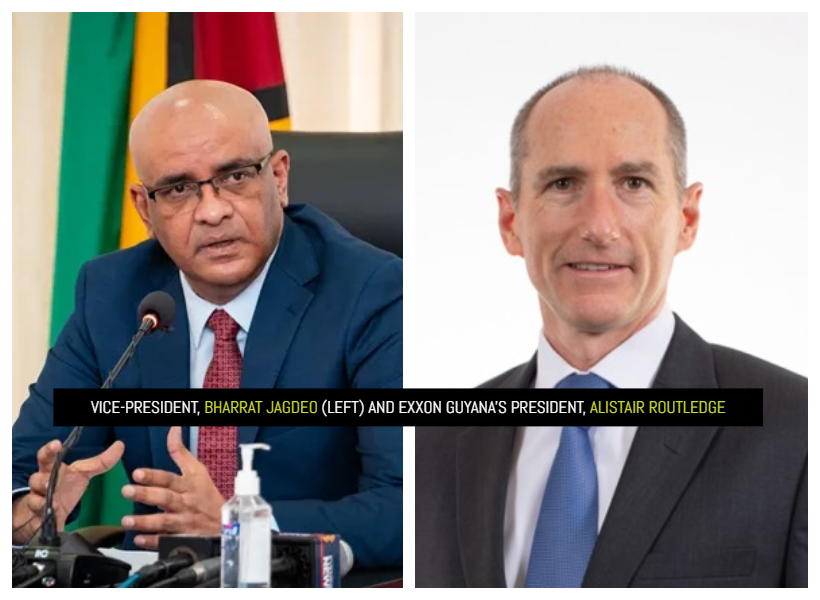By Abena Rockcliffe
Several Guyanese who demonstrate concern about oil and gas, and the government’s handling of this golden egg, expressed their belief that the People’s Progressive Party/ Civic (PPP/C) Government has teamed up with oil giant ExxonMobil against citizens.
Chartered accountant Christopher Ram, who has an oil-focused column in the Stabroek News, is one of the many commentators who expressed this sentiment. He said, in one of his columns published a few months back, “In Guyana, our government does the opposite: it takes the side of oil companies and ignores the plight of the consumers.”
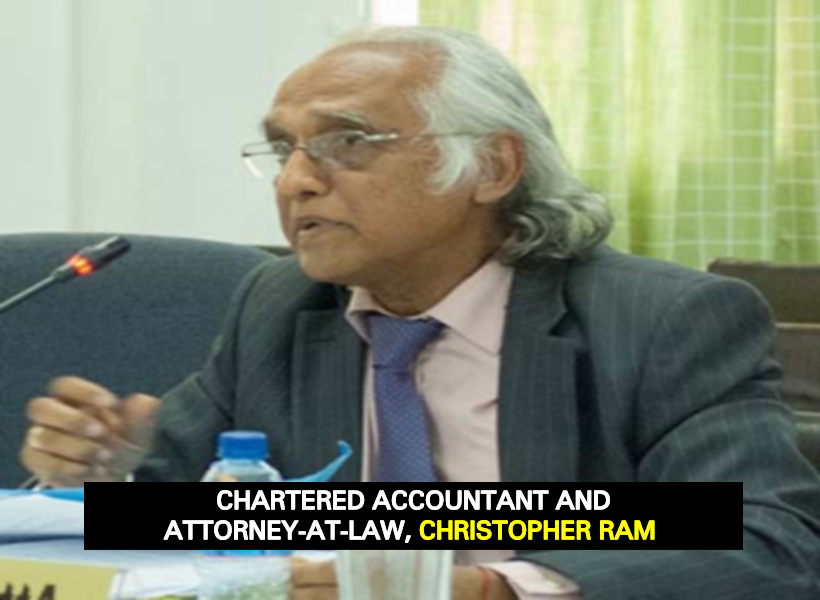
Ram was at that time registering his disagreement with the government’s refusal to impose a windfall tax on Exxon.
Claims that the government has teamed up with ExxonMobil are also provoked by the administration’s unwillingness to renegotiate the 2016 Production Sharing Agreement (PSA) signed by former Minister, Raphael Trotman.
Another issue that usually agitates oil fanatics is the absence of unlimited financial assurance for oil spills; especially since the government is viewed as “siding” with ExxonMobil on this issue, even in the courts.
The purpose of this article is not to highlight the merits of the government’s decisions; neither is it the intention of this author to rehash arguments put forward by the Irfaan Ali-led government and repeated, countless times, by Vice President, Bharrat Jagdeo at his many press conferences.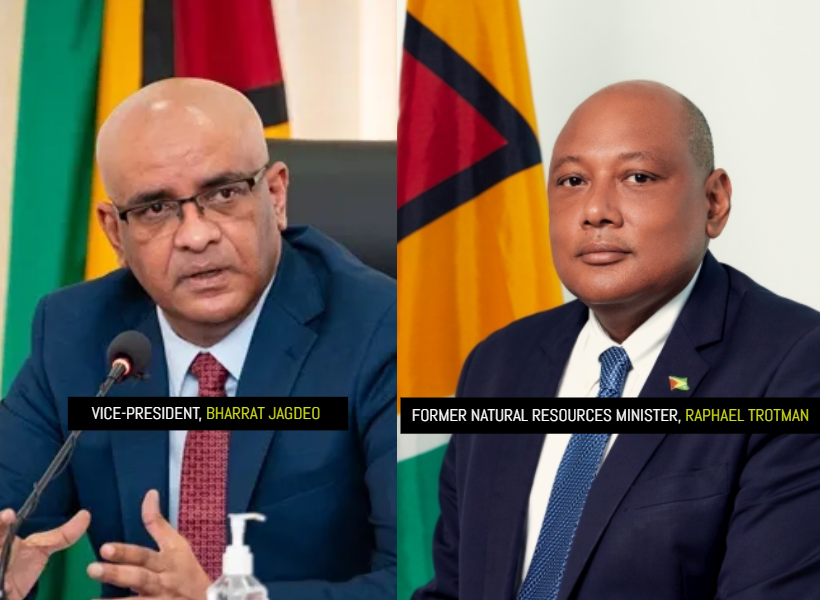
Instead, this author wishes to present several decisions taken by the government that appear to be in stark contrast to the perceived trend of the government serving strictly at the pleasure of an oil king.
Gas-to-Energy
The Gas-to-Energy project, anticipated to be the most expensive undertaking in Guyana’s history, can by no stretch be considered a pet project of ExxonMobil. Were it left up to that company, gas would either be flared or reinjected. However, the PPP/C government insists on monetizing the resource.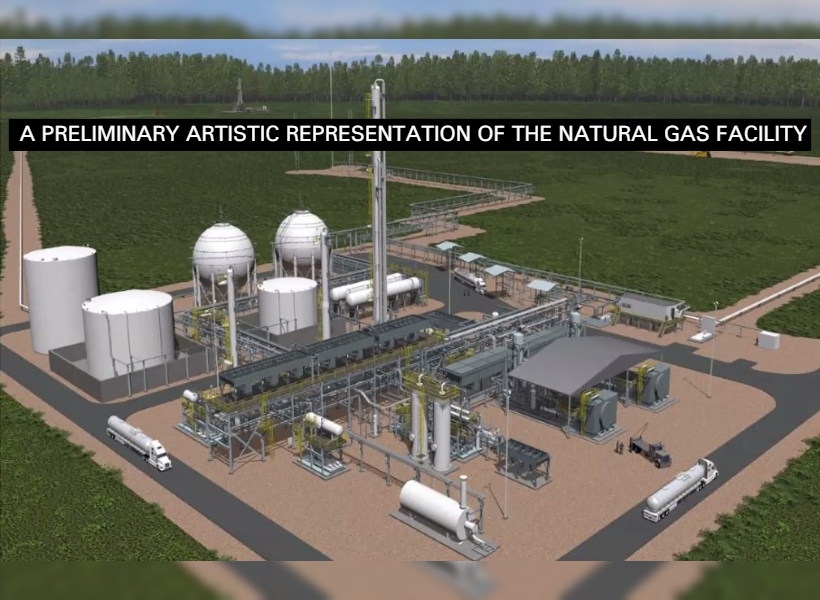
The government touts this project as a game-changer for Guyana. This single project is anticipated to aid significantly in the reduction of the nation’s carbon footprint and unleash the potential of traditional industries especially subsectors in agriculture and manufacturing. The Gas-to-Energy project is also expected to help Guyana create a new downstream industry with petrochemicals at the helm.
But those significant benefits were not enough to cause ExxonMobil to jump unreservedly on board. The oil company maintains that reinjection of Guyana’s associated gas is the best use of the resource.
President of ExxonMobil Guyana, Alistair Routledge reminded the media a few months ago that the petroleum agreement lays out reinjection of the gas, and the use of it as fuel offshore as the “right use.” He said that that “generally generates the highest value from the resource for the country and the investment.”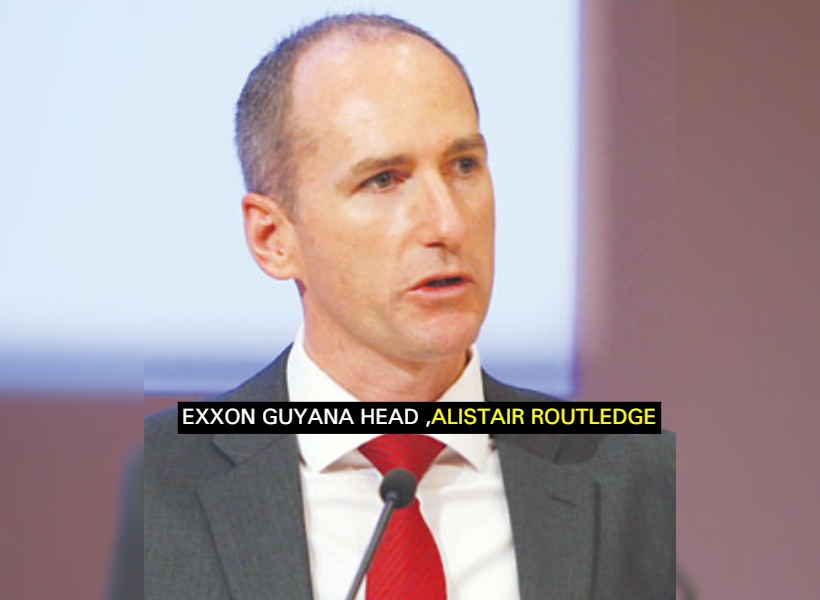
Referencing the agreement with government to provide 50 million cubic ft. of gas in the first phase of the project, Routledge said that that is possible as it is within an “error of margin”.
He said, “So our agreement with the government is that it is close enough that on a risk basis we can make available the 50 mcfd.” He added that the availability of more gas will be assessed later on.
Days after Routledge said this, Dr. Jagdeo, in response to a question put by Guyana Standard, vowed that ExxonMobil would provide that gas needed, in the quantity needed. He reminded that ExxonMobil, in the first instance, did not even want to provide the 50 mcfd.
Further, the Vice President literally admitted that his government is depending on this project to be one that will help secure its victory at the polls come 2025. Speaking about a scenario where the project is not implemented, Dr. Jagdeo said, “We would lose the election.”
New Model PSAs
ExxonMobil is by no means happy with the new model Production Sharing Agreements (PSAs) which will govern operations for deepwater and shallow water concessions.
Routledge said as much when the question was posed by Guyana Standard at a press conference. While some of the punitive measures for failure to carry out work programmes and relinquishment clauses are cause for concern for ExxonMobil, this publication understands that the company is also uncomfortable with the new fiscal regime, something the Vice President vows will remain.
The model PSAs which were recently finalized will be used for the first time following the completion of Guyana’s first auction on November 1. Several companies are expected to vie for 14 blocks with the timeline for submission of bids ending on September 12.
There is a possibility that given its concerns, Exxon may choose not to partake in that auction.
However, the government has signaled its intention to bring ExxonMobil under compliance with one of the new PSAs should it pursue production on two other massive offshore blocks previously acquired—Kaieteur and Canje.
Auditing
ExxonMobil’s PSA for the Stabroek Block, Guyana’s only producing offshore concession with over 33 discoveries, only offers regulators a two-year timeline to audit expenses. The PSA also notes that if Guyana fails to carry out an audit within the stipulated time, the contractor can recover those costs without fear of being contested.
With Guyana’s paucity in capacity, the government pushed back against this. Government refused to be held hostage by the unreasonable timeline. The government has put its foot down that Exxon shall comply with its pace of audit and if there are disputed costs, it must be trashed out.

The Vice President said the only reason for this audit is to measure cost against industry standards and confirm the accuracy of cost oil, but such accuracy must be verified.
Learning from its implementation of the Stabroek Block PSA, the government has also included in its new PSAs that the new timeline for audits will be as long as seven years.
Capping stack
Another source of contention between our government and ExxonMobil was the now mandatory subscription for a capping stack in the country. A few months back, Routledge boasted about the capping stack as one of the measures in place to mitigate an oil spill. He brought this up as he addressed his company’s pushback against unlimited financial assurance.
While the usefulness of the capping stack cannot be disputed, Routledge neglected to mention that this is not Exxon’s initiative. The company did not one day decide, ‘Oh this is a good technology to safeguard the people of Guyana in the event of an oil spill.’ Instead, a subscription was forced upon the company. The government fought hard.
Exxon had dubbed this important safety provision too costly and fought the Environmental Protection Agency (EPA) in an effort to divert. The oil giant now has to secure a capping stack in the country and has to maintain a subscription to one that can be shipped within days if needed. It must be noted that the capping stack is only a requirement of the licences for the Payara and Yellowtail projects. It was not a requirement for Liza 1 and 2.
Local Content Law
ExxonMobil was adamant that given the deficit of human resources locally, both skilled and unskilled, Guyana did not require legislation for local content.
Even when the company realized that there is no deterring the government from arming the country with that piece of legislation, Exxon tried hard to have government bypass requirements for many areas. But that too failed.
Still, there are some companies with which Exxon prefers to work and some of those companies have been accused of trying to skirt the Local Content Law with the rent-a-citizen phenomenon. But again, government is pushing back against this and several ministers continue to urge citizens not to help these companies and individuals make a mockery of the law.
Insurance
The Stabroek Block PSA allows ExxonMobil to self-insure for the handling of oil spills. To this end, the company has insurance in place to the tune of US$600M per oil spill incident. Based on the terms of the contract, that alone should suffice.

But after the public outcry about that sum being inadequate, the government decided to push ExxonMobil for more. The push was successful, and eventually the government got ExxonMobil to secure US$2B in financial assurance from its affiliated companies in the block. Essentially, the government got ExxonMobil to commit US$2B more than what it is contractually mandated to provide for an oil spill. Some citizens, especially environmentalists, still argue that Guyana should secure unlimited financial assurance in the event of a spill.
Stability clause
The 2016 PSA is armed with a debilitating stability clause which basically stops times for ExxonMobil. According to the stern provisions of that clause, Exxon, for the life of the contract, will remain only in compliance with laws that existed at the time of the signing of the contract. This is as it relates to both financial and regulatory laws.
But the government has managed to deviate. There are a number of provisions in the newly minted Petroleum Activities Act with which ExxonMobil must conform and these provisions are all regulatory.
These provisions in the new legislation tie ExxonMobil to greater accountability and transparency in its operation of the Stabroek Block which holds a staggering 11 billion barrels of oil equivalent resources. 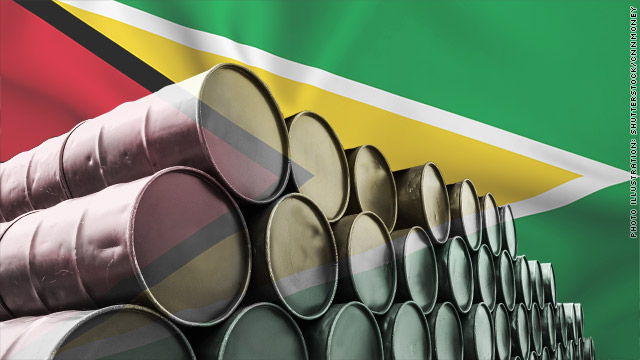
Of course, transactions and negotiations between the government and Exxon occur behind closed doors. Therefore, there is much that the public does not know. However, based on the information in the public domain, the government appears to be making some bold moves, pushing the envelope.
For the most part, Exxon has only been able to enjoy an unamended financial regime— a 2 percent royalty, 50/50 profiting sharing, 75 percent cost recovery ceiling and the satisfaction of its Income Taxes through the State’s share of profit oil remain the same. But much else has changed.

Therefore, one can conclude that the “sanctity” of contract has been broken, and the government has only been keen not to make changes to the financial regime. Some believe that this move is to maintain investor confidence. Others believe that despite all else, the government is simply afraid to step on ExxonMobil’s toes either for corrupt reasons or the simple lack of testicular fortitude.



